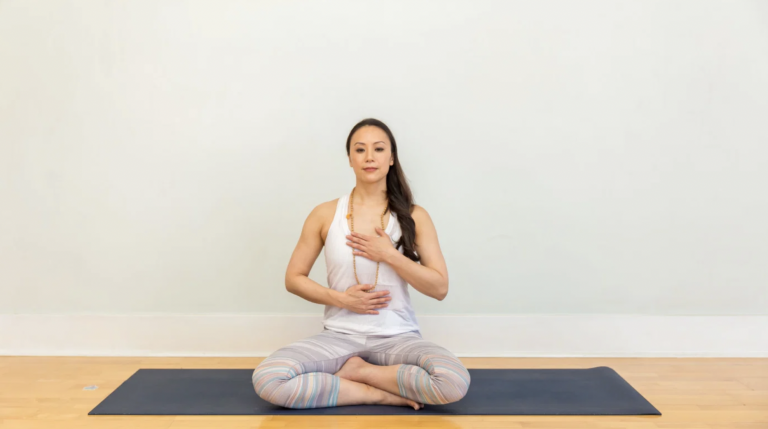Article originally published via Yoga Journal – view here.
These pranayama and asana practices, designed by Yang, can help ease the lingering pulmonary, cardiac, and neurological symptoms of COVID-19. They are also beneficial for anyone working through illness, stress, and difficulty breathing. Find a quiet, comfortable space and relax into breath and movement.
Diaphragmatic Breathing
After illness, your breathing may be altered. You might experience reduced diaphragmatic movement and compensate by using more of your neck and shoulder muscles. This results in exacerbated shallow breathing, increased fatigue, and higher energy expenditure. The breathwork described below aims to increase the efficiency of your respiratory muscles (including the diaphragm), helping you to boost energy and find comfort in your breath.
When working with a COVID recoveree, teach or practice diaphragmatic breathing a bit differently than traditional technique. You’ll add a breath hold at the end of your inhalation to improve oxygen exchange in the alveoli (the tiny air sacs at the end of your respiratory tract that enable oxygen and CO2 exchange) and exhale through pursed lips, in order to create more resistance and strength. Adding active abdominal muscle contractions at the end of your exhalations will increase abdominal pressure and push your diaphragm up to improve elasticity and strength.
- Sit with your back against a wall. Let the back of your head also gently touch the wall.
- Place your right hand on your belly and left hand on your chest.
- Breathe in slowly through your nose at a measured pace, so that the flow of air is even throughout the entire length of your breath.
- As you inhale, feel the right hand move as your belly expands with the inhale. The hand on your chest should remain as still as possible.
- Hold in the breath at the top of your inhalation for 2-5 seconds.
- Exhale slowly out through pursed lips, contracting your abdominal muscles up and in while releasing the air with the same cadence as your inhalation.
- Repeat this cycle of inhaling through the nose, holding, and exhaling through pursed lips for 5-10 breath cycles, or more if you can tolerate it. As you practice this technique, feel your entire thorax expanding in all directions, including into the wall, as that will give you sensory feedback on your skin that you are really taking in a deep breath.
- As you progress, you can also coordinate the breath with lifting the arms during your inhalations, and relaxing your arms down with the exhalations.
Yoga Postures
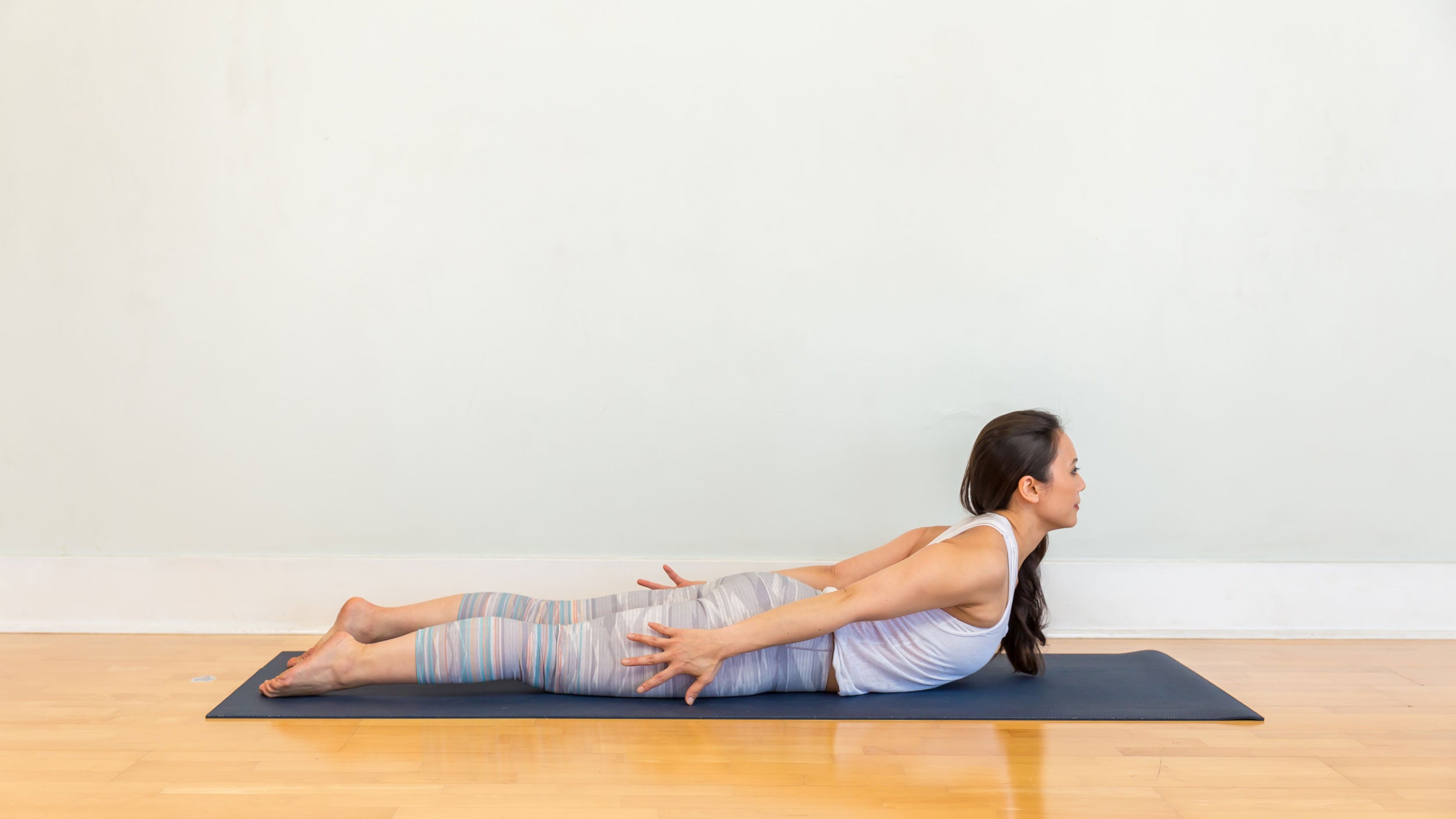
Salabhasana (Locust Pose)
Salabhasana reproduces the “proning position” that we recommend for COVID patients. Proning helps to recruit collapsed or poorly utilized alveoli that may not otherwise facilitate adequate oxygen exchange due to poor positioning and gravity. This technique works especially well for those who have been bed-ridden for several days or weeks.
Start prone with your forehead on the mat and your arms alongside your body. On an Inhalation, life your arms, shoulders, chest, and head. On an exhalation release your upper body down. Cycle through this 5-8 times. To rest, stack your hands under your forehead.
Bonus: add the legs to strengthen the lower body!
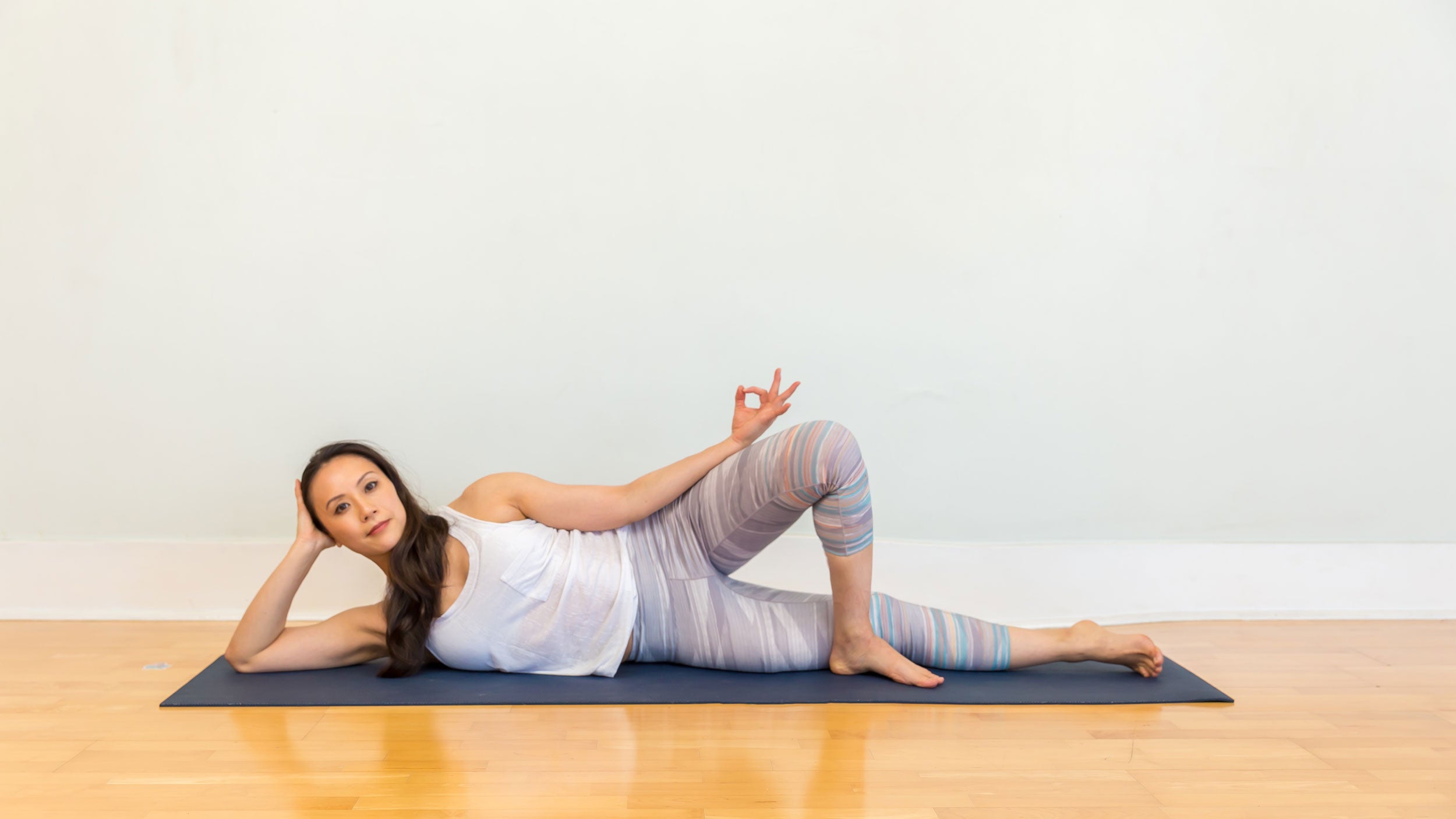
Anantasana (Vishnu’s Couch)
Anantasana is helpful for COVID long-haulers for the same reasons that Salabhasana is, but from a different orientation When practicing Anantasana for post-COVID recovery, the goal is not to get your top leg up high, but to balance on your side while taking in a deep breath. Feel free to step your top foot in front of the bottom knee to maintain balance. Take several breaths here.
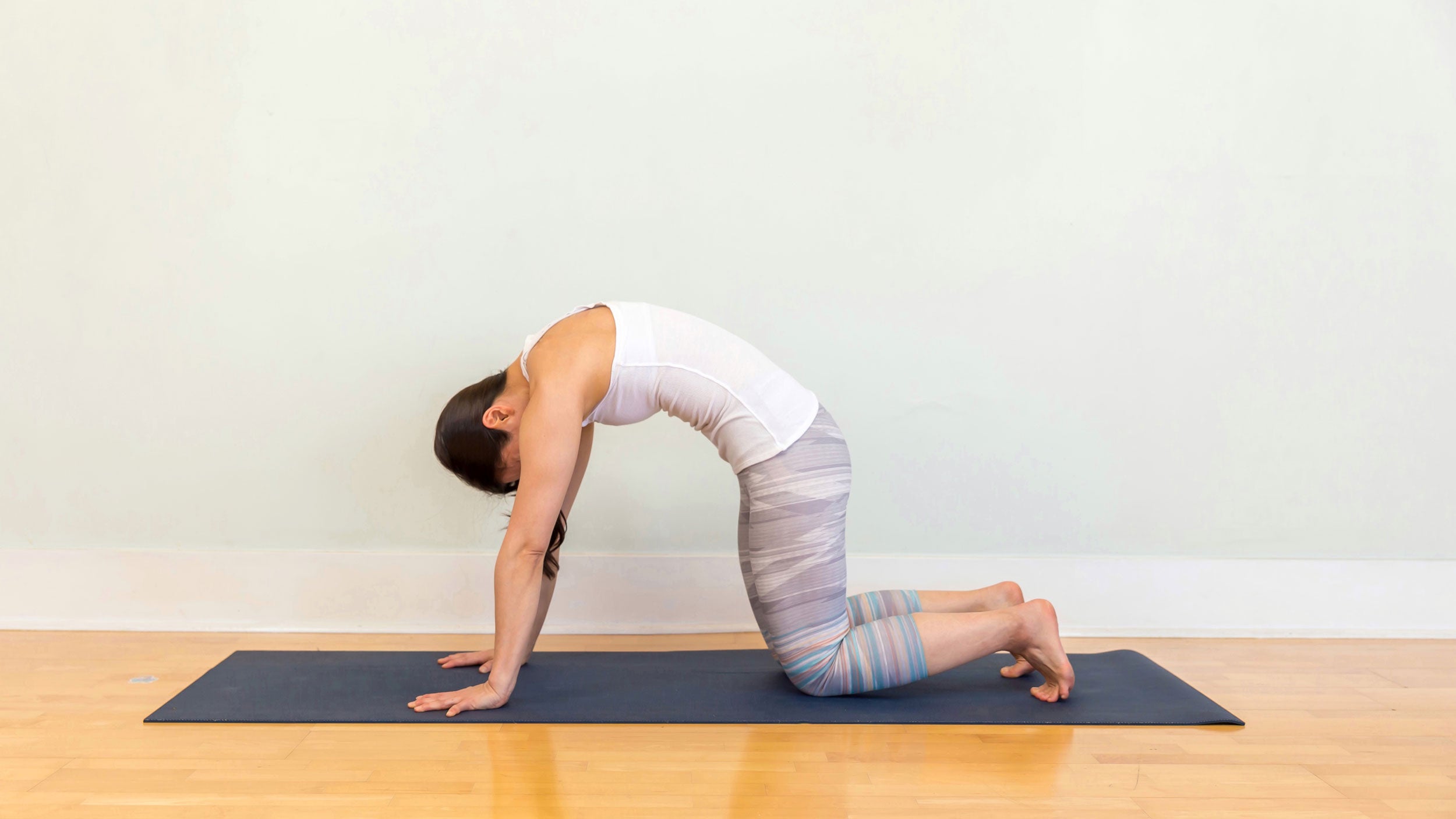
Marjaryasana and Bitilasana (Cat and Cow Poses)
Cat and Cow Poses are particularly helpful for COVID long-haulers because they reprogram the kinesthetic connection between breath and movement. They also stretch many of the back and chest muscles that may have become tight while being sedentary. Cat and Cow also stretch your intercostal muscles (important accessory muscles for breathing) and tone your core muscles (also important to improve diaphragmatic control).
Start with Cow so you stretch the front of your chest and reverse the kyphotic thoracic curve that may have become more exaggerated while laying in bed or sitting for prolonged periods of time. Cycle through the movements with your breath. If you prefer to practice in a chair, hold onto your knees with your hands and move your spine with the breath. Cycle through 5-8 times.
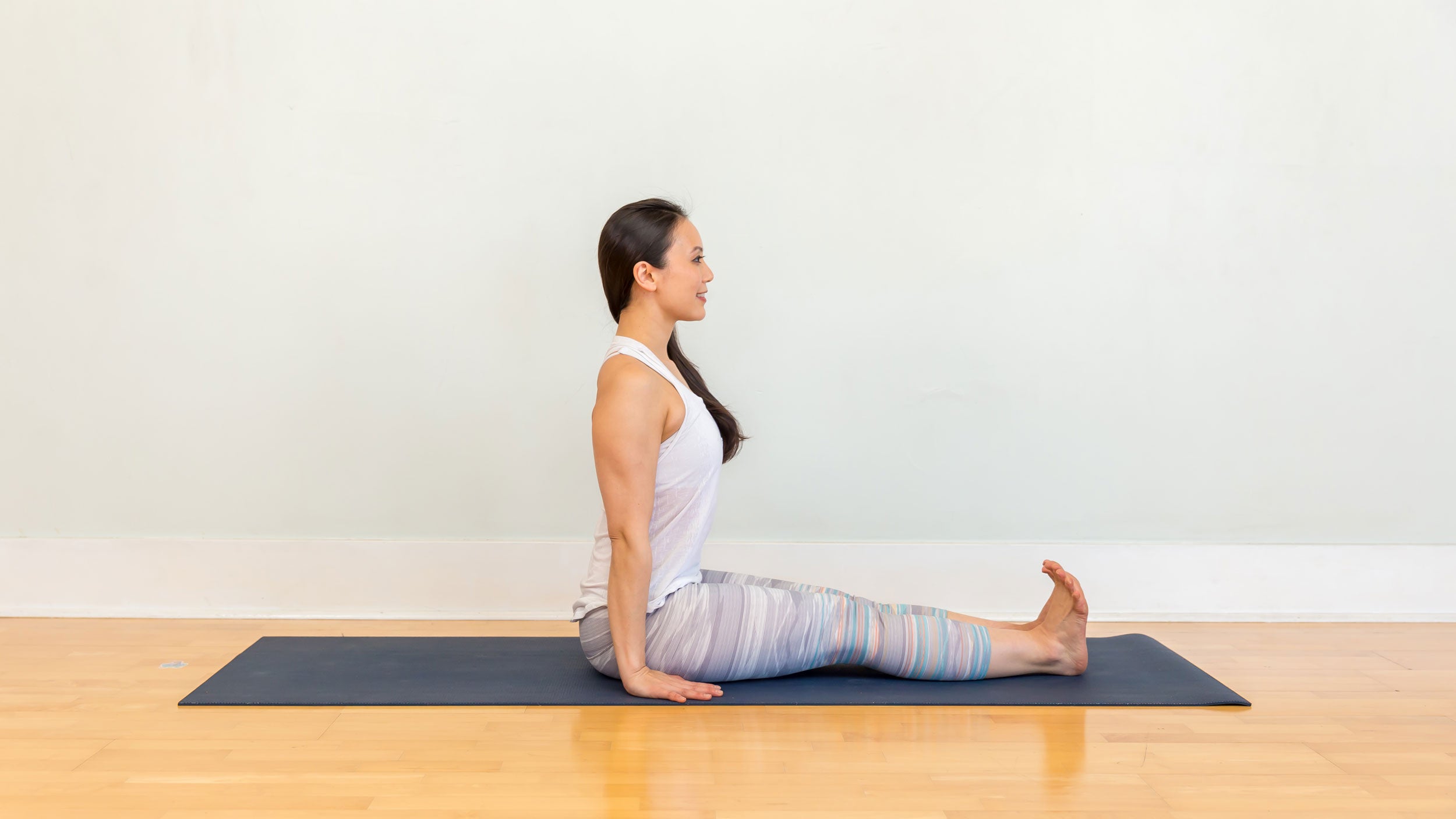
Dandasana (Staff Pose)
This posture teaches us to sit and stand up straight and use our core muscles. Posture plays an important role in respiratory function, and studies on COVID-19 recovery encourage patients to try to sit up tall.
Sit on a bolster or block and roll a blanket under your knees to take pressure off your low back. Place your hands on the mat or on low blocks next to your hips to assist in finding an upright posture. Focus on gently dorsiflexing the feet (especially the big toes) by pressing the heels out and away from you.

